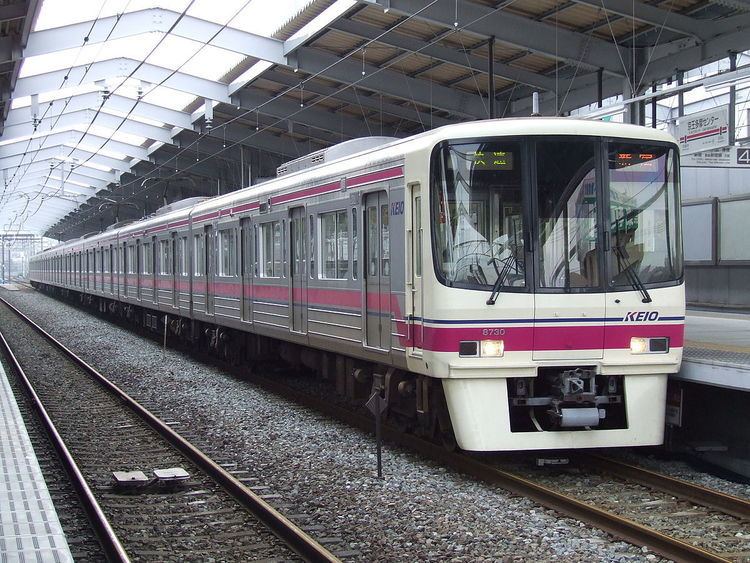In service 1992 – Present Number built 245 vehicles | Constructed 1992 - 1999, 2009 Number in service 244 vehicles | |
 | ||
Number scrapped 1 vehicle (accident damage) | ||
The Keio 8000 series (京王8000系) is an electric multiple unit (EMU) train type operated by the private railway operator Keio Corporation on commuter services in the Tokyo area of Japan since 1992.
Contents
Technical details
Body
The body is stainless steel. The front is steel.
Driver's cab
"T" shape one handle master-controller system. Digital speedometer. TNS (Train Navigation System).
Formations
As of 1 April 2015, the fleet consists of 14 ten-car sets and 13 eight-car sets (244 vehicles in total), formed as follows.
History
The first 8000 series trains were introduced in 1992.
Six-car and four-cars sets (and occasionally a pair of four-car sets) used to be operated on splitting services which separated and re-joined at Takahatafudō Station until 2006. Now, all six-car and four-car 0-subseries sets are permanently formed as 10-car trains.
The 8000-series trains are used exclusively on Keio Corporation lines. Unlike some other Keio trains, they do not continue past Shinjuku on to the Toei Shinjuku Line.
